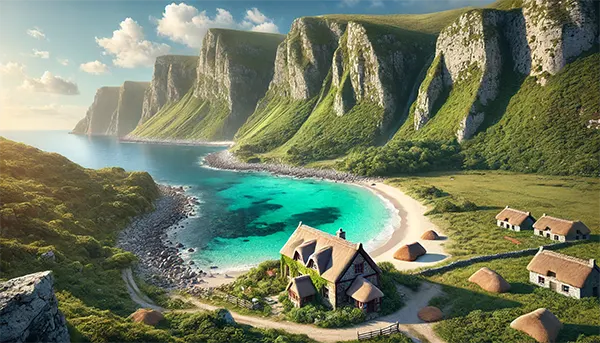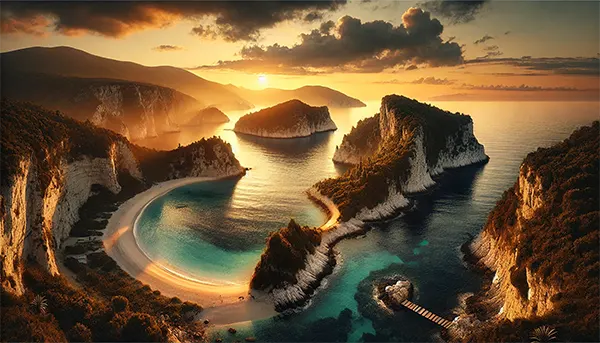
Hidden European Islands Without Tourist Crowds
Europe is home to many well-known tourist destinations, but there are still islands that remain untouched by mass tourism. These hidden gems offer tranquillity, stunning landscapes, and authentic local experiences. Whether you’re looking for pristine beaches, unique cultural heritage, or breathtaking nature, these lesser-known islands are perfect for your next getaway.
Unlike the overcrowded beaches of Spain, France, and Italy, these islands have preserved their charm, offering travellers a chance to enjoy serene coastlines, picturesque villages, and undisturbed natural beauty. While some require a bit more effort to reach, the reward is an authentic and peaceful escape away from the mainstream tourist trail.
Below, we explore three of the most stunning hidden islands in Europe, each with its own unique appeal. Whether you love outdoor adventures, historical sites, or simply wish to unwind in a quiet paradise, these destinations provide an ideal retreat.
Azores, Portugal: A Volcanic Wonderland
Located in the middle of the Atlantic Ocean, the Azores archipelago consists of nine volcanic islands that boast lush greenery, dramatic cliffs, and crystal-clear waters. Unlike the crowded coastal resorts of mainland Portugal, the Azores remain relatively undiscovered by mass tourism.
São Miguel, the largest island, offers visitors the chance to explore thermal springs, crater lakes, and picturesque fishing villages. The island’s Sete Cidades Lake, a twin-lake situated inside a dormant volcano, is one of the most breathtaking sights in the region. Meanwhile, the island of Terceira is home to the historic city of Angra do Heroísmo, a UNESCO World Heritage Site known for its charming colonial architecture and rich maritime history.
Whale watching is another highlight of the Azores, as the surrounding waters are home to numerous species of whales and dolphins. The best time to visit for whale watching is between April and October when migratory species pass through the area. The Azores’ untouched waters and strong environmental protections make this one of the best destinations in Europe for marine wildlife encounters.
Things to Do on the Azores
Hiking enthusiasts will find plenty of scenic trails leading through lush forests, volcanic craters, and waterfalls. The island of Pico, home to Portugal’s highest mountain, is a favourite spot for trekking and climbing. The Pico Mountain trail offers a challenging but rewarding hike, with panoramic views stretching across the Atlantic.
For those seeking relaxation, the hot springs of Furnas provide a natural spa experience, with therapeutic waters surrounded by tropical gardens. Many local restaurants in Furnas also cook traditional meals using geothermal heat, offering a unique culinary experience. The famous “Cozido das Furnas,” a slow-cooked stew prepared underground using volcanic steam, is a must-try dish for visitors.
Diving and snorkelling are also popular activities, with vibrant marine life, underwater caves, and volcanic rock formations to explore. Santa Maria, one of the smaller islands, is known for its warm waters and excellent visibility for divers. The natural pools of Biscoitos on Terceira Island offer a more relaxed swimming experience in sheltered lava-formed pools.
Sylt, Germany: The Secret of the North Sea
Sylt, often called the “Hamptons of Germany,” is a stunning North Sea island known for its long sandy beaches, rolling dunes, and charming thatched-roof cottages. While it is popular among German tourists, it remains largely undiscovered by international visitors.
Unlike the Mediterranean islands, Sylt offers a different kind of coastal charm, with its wild, windswept landscapes and quaint fishing villages. The island’s traditional Frisian culture is still very much alive, with locals speaking both German and Frisian. The island’s untouched nature reserves, such as the Wadden Sea UNESCO World Heritage Site, provide a glimpse into an ecosystem that has remained unchanged for centuries.
One of Sylt’s main attractions is its extensive cycling network, which allows visitors to explore the island’s breathtaking scenery while riding through heathlands, salt marshes, and coastal paths. The trails stretch for over 200 km, making cycling one of the best ways to discover Sylt’s hidden spots and remote beaches.
Activities on Sylt
Sylt is a paradise for water sports enthusiasts, with excellent conditions for windsurfing and kitesurfing. The beaches of Westerland and Hörnum are particularly popular among surfers due to the strong North Sea winds. The annual Windsurf World Cup held in Sylt attracts top athletes and spectators from around the world.
Gourmet lovers will appreciate the island’s renowned seafood cuisine, with fresh oysters, shrimp, and locally caught fish served in top-class restaurants. Sylt is home to several Michelin-starred restaurants, making it a great destination for fine dining. The local speciality, “Sylter Royal” oysters, are harvested in the island’s tidal waters and served fresh in many restaurants.
Those interested in history and culture can visit the island’s many museums, including the Sylt Museum in Keitum, which showcases the island’s maritime heritage and traditional Frisian lifestyle. Another fascinating site is the Denghoog Megalithic Tomb, a well-preserved prehistoric burial site dating back over 5,000 years.

Lastovo, Croatia: A Tranquil Adriatic Escape
Situated in the Adriatic Sea, Lastovo is one of Croatia’s least developed islands, offering visitors a peaceful retreat away from the bustling tourist spots of Dubrovnik and Split. The island is part of the Lastovo Archipelago Nature Park, making it a haven for nature lovers.
Lastovo is known for its untouched landscapes, crystal-clear waters, and starry night skies. Due to its remote location, it is one of the best places in Europe for stargazing, as there is minimal light pollution. The Milky Way is clearly visible on clear nights, making the island a paradise for astronomy enthusiasts.
The island’s medieval town, with its stone houses and picturesque alleys, provides a glimpse into Croatia’s rich history. Lastovo’s isolation has helped preserve its unique traditions and laid-back island lifestyle. Many houses on the island feature distinctive chimneys, known as “fumari,” a local architectural feature found nowhere else in Croatia.
Exploring Lastovo
Kayaking and sailing are among the best ways to explore the hidden coves and secluded beaches of Lastovo. The island has over 40 small bays, perfect for a quiet swim or a private picnic by the sea. Skrivena Luka, meaning “Hidden Harbour,” is a stunning bay ideal for mooring boats and enjoying the peaceful Adriatic waters.
For adventure seekers, hiking trails lead to breathtaking viewpoints, including Hum, the island’s highest peak. The hike offers panoramic views of the Adriatic and the surrounding islets. The lush pine forests covering the island make for excellent trekking routes, with well-marked paths leading to secret beaches and scenic spots.
Food enthusiasts can savour traditional Dalmatian cuisine, with fresh seafood, locally produced olive oil, and the island’s famous red wine, Plavac Mali, which is grown in small family vineyards. The island’s slow-paced lifestyle allows visitors to enjoy long, leisurely meals in family-run konobas (taverns), where the food is prepared using generations-old recipes.




